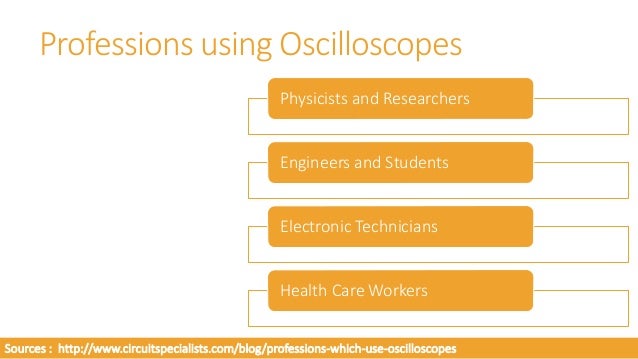Audit Exemption for Ltd company - date on balance sheet
❤️ Click here: Cro ar date
Ceci n'a été possible qu'après que le gouvernement croate a accepté de mieux coopérer avec le. Les aspirèrent à la formation d'un , dans le cadre de la monarchie austro-hongroise, mais l'accord austro-hongrois de laissa le à l', tandis que le demeura en union personnelle avec la , relation spécifique respectant les subjectivités politiques des deux royaumes, et comparable au lien unissant l'Écosse et l'Angleterre. Their brain capacity was about 1,600 cc 98 cu in , larger than the average for. Though the find is too fragmentary to compare the anatomy to the Cro-Magnon find, the associated tools are Aurignacian.

Il préside l'exécutif municipal, composé de membres également élus pour quatre ans. The timestamp is only as accurate as the clock in the camera, and it may be completely wrong.

Filing an Annual Return - Genetically, EEMH form an isolated population between 37 and 14 ka, with significant Mesolithic admixture from the Near East and Caucasus beginning around 14 ka.
Tool from Cro-Magnon — Collection European early modern humans EEMH in the context of the refers to the early presence of in Europe. The term EEMH is equivalent to Cro-Magnon Man, or Cro-Magnons, a term derived from the in southwestern France, where the first EEMH were found in 1868. In literature published since the late 1990s, the term EEMH is generally preferred over the Cro-Magnon, which has no formal taxonomic status, as it refers neither to a species or subspecies nor to an archaeological phase or culture. The earliest known remains of EEMH can be dated to before 40,000 years ago 40 ka with some certainty: those from in Italy, and from in England, to 45—41 ka. A number of other early fossils are dated close to or just after 40ka, including fossils found in Romania , 42—37 ka and Russia , 40—35 ka. These hunter-gatherers emerge after the end of the LGM ca. The WHG lineage survives in , albeit only as a minor contribution overwhelmed by the later and migrations. Map of sites at the transition between the Upper Paleolithic and the. While AMH may have been present in West Asia since before 250 ka, modern non-Africans mainly descend from the main successful expansion at around 65 ka. This movement was an offshoot of the rapid expansion within East Africa associated with. EEMH are associated with , also widespread in Central Asia, and with Y-chromosomal. AMH are estimated to have during about 65 to 47 ka, most likely. It is this lineage that began to move into Europe beginning about 45 ka. Neanderthals are shortly after this time, presumably being outcompeted or actively killed by the advancing EEMH. Admixture with Neanderthals appears to cease almost entirely after 45 ka, in spite of several millennia of continued co-existence of AMH and Neanderthals in Europe. There are two main hypothesis as to the route taken by the earliest AMH entering Europe, following the or the Mediterranean coast along the. Support for either hypothesis relies on accurate dating of the earliest known fossils in the region. High-precision dating of the earliest Proto-Aurignacian sites in Europe, Italy , Germany , and France , have yielded dates of close to 42 ka, indicating that EEMH spread throughout Western Europe very rapidly. EEMH sites in Europe earlier than 37 ka are also termed Proto-Aurignacian. The proper, the stage associated with the , appears to have developed within Europe. It lasts from 37 ka until about 28 ka. The is the European culture immediately preceding the LGM, about 28 to 22 ka, but the early Gravettian overlaps with the later Aurignacian, from as early as 33 ka. During the LGM proper, beginning about 22 ka, there are two main , the in Southwestern Europe, and the in Italy and Southeastern Europe. With advancing deglaciation, after about 17 ka, finds associated with the , are transitional to the mesolithic hunter-gatherer populations. The is taken to begin after about 14 ka. Cro-Magnons were anatomically modern, straight limbed and tall compared to the contemporaneous. They are thought to have stood on average 1. They differ from modern-day humans in having a more robust physique and a slightly larger. The Cro-Magnons had fairly low skulls, with wide faces, robust mandibles, blunted chins, narrow noses, and moderate to no. A distinctive trait was the rectangular , similar to those of modern. Their vocal apparatus was like that of present-day humans and they could speak. Their brain capacity was about 1,600 cc 98 cu in , larger than the average for. Analysis of ancient DNA of EEMH and Mesolithic fossils suggests that alleles related to the characteristic of modern Europeans and were not yet present. The variation for first appears around 14 ka in Italy and the Caucasus. The Aurignacian differ from the earlier cultures by their finely worked bone or antler points and flint points made for , the production of and. They pierced bones, shells and teeth to make body ornaments. The figurines, cave-paintings, ornaments and the mysterious Venus figurines are a hallmark of Cro-Magnon culture, contrasting with the utilitarian culture of the Neanderthals. Like most early humans, the Cro-Magnons were primarily big-game hunters, killing , , , and. They hunted with , , and. They would have been nomadic or semi-nomadic, following the annual migration of their prey, and also have eaten plant materials. In village in , several huts built from mammoth bones possibly representing semi-permanent hunting camps have been unearthed. Finds of spun, dyed, and knotted fibers among Cro-Magnon artifacts in shows they made cords for stone tools, weaving baskets, or sewing garments. Site Region country Industry Age ka Description Italy Proto-Aurignacian 44 In November 2011, tests conducted at the Oxford Radiocarbon Accelerator Unit in England on what were previously thought to be Neanderthal baby teeth, which had been unearthed in 1964 from the in Italy. These were identified as the oldest anatomically modern remains ever discovered in Europe, dating from between 43,000 and 45,000 years ago. No tools were associated with the find. Central Europe Germany Proto-Aurignacian 42 The of has been radiocarbon dated to 43-42 ka. The so-called is somewhat younger 40-35 ka. Other of the early Aurignacian was found in the area, including and the see No dated human remains are associated with these finds. Western Europe UK Proto-Aurignacian 41 The find is a prehistoric upper jawbone fragment was uncovered in the cavern during a 1927 excavation in by the Torquay Natural History Society, and named Kent's Cavern 4. In 2011 the fossil was tested and redated to at least 41,500 years old and confirmed to be Cro-Magnon, making it the earliest anatomically modern human AMH fossil yet discovered in Western Europe. Though the find is too fragmentary to compare the anatomy to the Cro-Magnon find, the associated tools are Aurignacian. No tools are associated with the finds. The modern attributes place it close to EEMH among samples. The fossil is one of the few finds in Europe which could be directly dated and is at least 37,800 years old. Oase 2 and fragments Oase 3 , discovered in 2005, is the skull of a young male, again with mosaic features, some of which are paralleled in the Oase 1 mandible. Eastern Europe Russia Aurignacian 33 Dated at 32,600 ± 1,100 radio-carbon years, the find from consists of a tibia and a fibula in a rich culture layer. The occupation layers contain bone and ivory artifacts, including possible figurative art, and fossil shells imported more than 500 kilometers. Gower Western Europe UK Aurignacian 33 Despite its name, the is a partial skeleton of a young male, lacking a skull. It was discovered in 1823 in a cave burial in Gower, South Wales, United Kingdom. The bones was stained with , and was the first human fossil to have been found anywhere in the world. At 33,000 years old, it is still the oldest ceremonial burial of a modern human ever discovered anywhere in Western Europe. Associated finds were red ochre anointing, a mammoth skull, and personal decorations suggesting or other religious practice. Grave goods are considered late Aurignacian or Early Gravettian in appearance. Genetic analysis of mtDNA yielded the , the most common group in Europe. La Quina Aval Western Europe France Aurignacian 33 Consisting of a partial juvenile mandible, the find is also associated with early Aurignacian tools. The jaw has some archaic features, though it is mainly modern. The find is dated to max 33,000 - 32,000 radiocarbon years. Les Roisà Mouthiers Western Europe France Aurignacian 32 There are diagnostic modern human remains associated with a later Aurignacian assemblage at Les Roisà Mouthiers, France. The date is likely not older than 32,000 radiocarbon years. Central Europe Czech Republic Aurignacian 31 in have yielded the remains of several individuals, but few artifacts. The artifacts found have tentatively been classified as Aurignacian. The finds have been to around 31,000 radiocarbon years somewhat older in calendar years , Mladeč 2 is dated to 31,320 +410, -390, Mladeč 9a to 31,500 +420, -400 and Mladeč 8 to 30,680 +380, -360 14C years. Radiocarbon dating yielded an age of 30,150 ± 800 years. No associated tools were found. Muierii and Cioclovina Caves Southeastern Europe Romania Aurignacian 30 is a complete neurocranium from a robust individual lacking all facial bones. The find is from a cave bear den, Cioclovina Cave,. It is dated at 29,000 ± 700 radiocarbon years. Western Europe France Aurignacian 29 Cro-Magnon 2, the female skull found at Cro-Magnon 1884 drawing The original Cro-Magnon find was discovered in a rock shelter at , ,. The type specimen from the site is , a male, carbon dated to about 28,000 14C years old. Compared to Neanderthals, the skeletons showed the same high forehead, upright posture and slender skeleton as modern humans. The other specimens from the site are a female, Cro-Magnon 2, and another male, Cro-Magnon 3. The condition and placement of the remains of Cro-Magnon 1, along with pieces of shell and animal teeth in what appear to have been or necklaces, raises the question of whether they were buried intentionally. If Cro-Magnons buried their dead intentionally, it suggests they had a knowledge of , by burying their dead with necklaces and tools, or an idea of and that the bodies needed to be contained. Analysis of the of the shows that the humans of this period led a physically difficult life. In addition to infection, several of the individuals found at the shelter had fused in their necks, indicating traumatic injury; the adult female found at the shelter had survived for some time with a skull fracture. As these injuries would be life-threatening even today, this suggests that Cro-Magnons relied on community support and took care of each other's injuries. Central Europe Czech Republic Aurignacian-Gravettian 26 The near , was discovered in the late 19th century. Excavations were conducted between 1884 and 1930. As the original material was lost during , in the 1990s, new excavations were conducted. The Předmostí site appears to have been a living area with associated burial ground with some 20 burials, including 15 complete human interments, and portions of five others, representing either disturbed or secondary burials. The non-human fossils are mostly. Many of the bones are heavily charred, indicating they were cooked. Other remains include , , , , , , and. Remains of three dogs were also found, one of which had a bone in its mouth. The Předmostí site is dated to between 24,000 and 27,000 years old. The people were essentially similar to the French Cro-Magnon finds. Though undoubtedly modern, they had robust features indicative of a big-game hunter lifestyle. They also share square eye socket openings found in the French material. Italy Aurignacian-Gravettian 25 is a find from the in Italy. The caves yielded several finds, among them two fairly complete skeletons in the lower Aurignacian layer. Though the age and accompanying tools suggests Cro-Magnon, the skeletons differ physically from the large and robust Cro-Magnons, being slender and rather short. The have been dated to the later Gravettian or Epi-Gravettian, 24 to 19 ka. Western Europe Portugal Gravettian 24 The from , Portugal, about 24,000 years old, a fairly complete and quite robust skeleton, possibly showing some traits. Western Europe France Solutrean 21 Skull of the Pataud woman The shelter shows human habitation throughout the Aurignacian to Solutrean, but was abandoned in the early Magdalenian, about 17 ka. The woman's skull was buried separately, about four meters from the body, lying protected between stones. Western Europe France Magdalenian 15 The , a short and stocky older man buried in , France, was found with tools. Several other more fragmentary finds, like the skeleton from and the Duruthy cave near has traditionally been linked to the Chancelade man. Western Europe France Magdalenian-Azilian 14 is a female skeleton, discovered in Dordogne in 1911. Dating to the later Magdalenian, transitional to the beginning Mesolithic. Western Europe Switzerland Magdalenian-Azilian 14 is the skeleton of a young male of the mesolithic hunter-gatherer WHG lineage. Italy Magdalenian-Azilian 14 Villabruna 1 is a skeleton, dated 14. Villabruna 1 is the oldest bearer of Y-haplogroup R1b found in Europe, and has been taken as a representative of the beginning post-LGM Mesolithic migration movement from the Near East. Further information: The lineage of EEMH contributes substantially to the modern populations indigenous to Europe. EEMH populations during the were probably confined to , associated with the and cultures. From there, Europe was re-peopled during the. The identification of the WHG component in modern populations is based on the analysis of the genome of a hunter-gatherer buried c. According to Fu et al. The WHG populations mixed extensively with the expanding EEF populations during the. In terms of unipaternal lineages, EEMH were descended from the patrilineal and , and maternal and descendant haplogroups and. Y-haplogroup IJ likely arose still in Southwest Asia. Y-haplogroup K-M2308 is associated with Central Asia, found in Siberian , but also in the Proto-Aurignacian fossil Romania. Mt-haplogroup arose in Europe just prior to the LGM, between 35 and 25 ka. The upper limit of 15,000 marks the transition to the , depending on the region also given in the range of 12,000 to 10,000 years ago. The Oxford Companion to Archaeology. Oxford, UK: Oxford University Press. The Cro-Magnons are identified with Homo sapiens sapiens of modern form, in the time range ca. Genetically, EEMH form an isolated population between 37 and 14 ka, with significant Mesolithic admixture from the Near East and Caucasus beginning around 14 ka. The Oxford Companion to Archaeology. Oxford, UK: Oxford University Press. The Oxford Companion to Archaeology. Oxford, UK: Oxford University Press. The name is not commonly encountered in modern professional literature in English, since authors prefer to talk more generally of anatomically modern humans AMH. This evident practical value has prevented archaeologists and human paleontologists from dispensing entirely with the idea of Cro-Magnons. Retrieved 7 November 2014. Harpending, and Robert K. Katerina Douka et al. Retrieved 16 April 2015. Archived from on October 20, 2010. Retrieved October 20, 2010. New York: Charles Scribner's Sons. Proceedings of the Symposium held in Lisbon, Portugal, June 25—30. Trabalhos de Arqueologia no 45. Retrieved 11 December 2014. Retrieved 29 March 2010. Upper Palaeolithic dwellings of mammoth bones in the Ukraine: Kiev-Kirillovskii, Gontsy, Dobranichevka, Mezin and Mezhirich. Proceedings of the National Academy of Sciences. Archived from PDF on 2016-03-03. Proceedings of the National Academy of Sciences. Journal of Human Evolution. Philadelphia PA: Paleoanthropology Society. Paléo - Revue d'archéologie préhistorique. Retrieved October 11, 2011. Archived from PDF on April 25, 2012. Retrieved 18 November 2014. London: Walter Scot, Ltd. Retrieved 18 November 2014. In contrast, the Near East has no appreciable WHG ancestry but some ANE ancestry, especially in the northern Caucasus. Jewish populations are marked with a square in this figure to assist in interpretation as their ancestry is often anomalous for their geographic regions. This correlates in time to the Bølling-Allerød interstadial, the first significant warming period after the Glacial Maximum. Archaeologically, it correlates with cultural transitions within the Epigravettian in southern Europe and the Magdalenian-to-Azilian transition in western Europe. Fu, Qiaomei; et al.
WE DID IT 3 TIMES?!?!
Au début du , la province côtière de devint vénitienne pour quatre siècles, puis française de 1809 à 1814, au sein des qui mirent fin à la. They are thought to have stood on average 1. The so-called is somewhat younger 40-35 ka. These must cover a period which ends not more than nine months prior to the date to which the annual return is made up. L'élection présidentielle croate de 2014 — 2015 s'est déroulée les 28 décembre 2014 et 11 janvier 2015.




